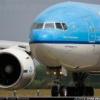
-
Content Count
1,313 -
Donations
$0.00 -
Joined
-
Last visited
Community Reputation
1,029 ExcellentAbout G550flyer
-
Rank
Member - 1,000+
Profile Information
-
Gender
Male
Flight Sim Profile
-
Commercial Member
No
-
Online Flight Organization Membership
IVAO
-
Virtual Airlines
Yes
Recent Profile Visitors
6,633 profile views
-
As said, smooth release and let her go unless you are expected to fly a track(other than runway heading). In the real world, you will notice less input is needed as you gain airspeed and the flight controls become effective. Just be smooth as you release. If flying a track, pre arm it if able and smooth release as the FD track becomes active at about 400 usually. One good example of what Lonesome is saying is the Camp Springs One departing North out of KADW. The departure wants you to turn to heading 270 within 3 DME of ADW. This keeps you out of KDCA. If you pre arm LNAV on this one, LNAV becomes active at 400 and the jet will turn you to 230 to 250 to try and intercept the track in the database. Quickly, departure will ask, where are you going. It's better to just pre arm the heading mode on the depicted heading and turn to it appropriately.
-
One thing to keep in mind is to be as clear as possible. In today's environment, there has been an increase in incursions, at least in the USA. I started in USAF aviation and by habit I want you to know who I am, what I am, where I am and my intentions. To this day I still respond in a military way as it's ingrained in my mind. The only time I shorten my communication is when told to. For example, in places like KATL, at times they just want your call sign in response when following taxi instructions.
-
Greetings all, I just wanted to drop a few things after scrolling through this thread😁. When I'm not slipping the surly bonds, I do my secondary job as a product manager doing software development internally within a company. I would say about 80% of my customers are internal and 20% are external. One thing that I have learned during software development in an agile fashion is that it is very customer based. The customer is at the center of development. Product(me), the customer and engineering all walk down the road of development hand in hand. Now, when we start talking about large purchases(hundreds of thousands to millions), they normally would fall into a waterfall flow. You pay up front, and then you will see/receive your product at some point at the end. For example, one company I flew for purchased four Gulfstream 550s. Like most, we paid upfront and would not see the first jet for over year. A lot of cases in waterfall, there is a disagreement about the used requirements on delivery. You know, the old, this isn't what I asked for situation. Compared to waterfall, this is the beauty of agile development/delivery. You put the customer at the center, they drive it and it's very likely they get exactly what they wanted because they were part of development. In fact, as an agile customer, you are both an investor and visionary. In agile, you are also delivering pieces of the development on a schedule. This piece by piece development allows and embraces changes and enhancements along the way. It's not faster than waterfall, but breaks the delivery up into smaller manageable chunks, which ensures on time delivery. I have sat in some meetings where we discuss releasing software and updates when there are bugs or if there wasn't enough time to get an item into the next release. These meetings are still customer and value focused. At times you push forward with software with minor bugs because it still generates value for the customer. As long as the bugs or delayed capability does not create a bad user experience, you push forward. There are times when I am shocked because I am pushing for a delay and the customer responds, that's fine. We need feature X right now and we need you to push it right now! This is the same situation we find when we are trying to be first to market. Does picture taking cell phones ring a bell? Remember, you would send a photo and the receiver would get a text requesting that they go download the photo from the network because, there was no solid way to send a photo. That was a first to market venture. What I am saying in a very long way is that you are seeing this agile flow with Beyond ATC and other developers. You can call it beta testing or what ever, but the fact remains that you as the customer get your hands on it right now and effect change with your feedback. When you are paying upfront, like my customers do, you are paying for a say/stake. It's easier to bring in ideas and changes while development is happening. When you wait till after delivery, it's too hard to stray from the base code that was implemented. This leads to a NEW development project. I remember being in the USAF and we realized that we did not buy enough KC10s. The factory was closed and Micky D was long gone. We even looked for old DC10s that we could possibly modify, but imagine the cost of that, if any were usable. Of course, Boeing wanted to push us their 767. The thing that was great about the KC10 is that it carried a lot of fuel with it's addition of body tanks and that fuel could all be burned or offloaded. You could also switch from a boom platform to a drogue platform in under two minutes. You could send any receiver type to the KC10 all at the same time. When Boeing was asked if they could add body tanks similar to the 10, they responded that they would have to re-open the 767 line to re cut the wings. Of course that would be a nominal fee. So we are now stuck with the Frankenstein tanker, which is the KC46. At the end of the day, you can purchase and drive the change. Or......., you can wait till the final product and post what you don't like and wish it did. Then you are at the mercy of the developer as they decide if it's even worth pushing forward with the requested changes. I have watched this group and they seem serious and transparent from the start. They even polled their customers for the early release decision. As I recall, they even made a major decision to control and inject traffic based on feedback. I know some won't be happy regardless. I support developers that are pushing the envelope of realism in our hobby.
- 428 replies
-
- 14
-

-

-

Landscape around KDCA by default or addon?
G550flyer replied to Area's topic in Microsoft Flight Simulator (2020)
Fact! -
I definitely hear ya. I've just gotten so accustomed to it being a tool. It's always in standby unless I'm departing into storms or picking through them. The fun is in building the big picture with the RADAR, looking at the winds and judging how many miles left or right to you need request to steer clear. I do long for the day when storms are actually dangerous and you have the ability to request ATC for deviations. That will be so cool. Especially at night or in the clouds when you can't see the cells and really have to rely on your RADAR skills to stay clear.
-
Well, the weather RADAR is nice I guess🤔. But until there is weather within the sim that forces me to rely on the RADAR as I do in real life, I'm not sure how necessary it is right now.
-

Managing Takeoffs Fenix A320 CFM vs. IAE Engines
G550flyer replied to zachlog's topic in Microsoft Flight Simulator (2020)
Reminds me of flexing in the Gulfstream. Before you flex, you better make sure you are still making the min climb gradients and not exceeding runway available lol. Run your scenario again and see what it does at full rated takeoff thrust. Take notes on lift off point and climb rate after lift off. This is interesting. -

Managing Takeoffs Fenix A320 CFM vs. IAE Engines
G550flyer replied to zachlog's topic in Microsoft Flight Simulator (2020)
This, when flying per the procedures, leads me to believe that there may be some issues in performance calculations for flaps 3. As I mentioned in an earlier post, aircraft performance will follow a curve in regard to flap settings. Another part of the curve that I didn't mention is the accel go portion of certification requirements. There is part for accel stop too😝. For example, FAA certified aircraft will be at 35FT at the end of the accel go distance. All depends on the certification requirements. What this means is that regardless of the flap setting used, the aircraft has to meet no less than that requirement ENGINE OUT. Now in a sense, for the same weight, flaps 3 should easily meet that requirement because more flaps get you off the ground quicker/easier. But regardless, if a higher weight is calculated for flaps 3, it still has to be no less than certified height by the end of it's respective accel go/balanced field length engine out. Based on my experience, if I am rotating in the last 500FT and I am not engine out, something is wrong. You do have the responsibility of ensuring you are not runway limited for a specific weight, but I'm unsure of what the EFB is doing in the back ground. At least in the real world, you are comparing runway limiting weight wet/dry and climb requirement weight to calculate the optimum/max weight. If your actual weight is less than those, you can flex to a point. These days, computers will spit that out in seconds once the conditions are entered. -

Managing Takeoffs Fenix A320 CFM vs. IAE Engines
G550flyer replied to zachlog's topic in Microsoft Flight Simulator (2020)
I'm not sure about the EFB calculations, but from a real world aircraft performance stand point, I will say this. Aircraft takeoff performance and configurations follow a curve so to speak. There are two items that will impact this. Runway available and required climb gradients. These two items may drive where you will fall in that curve. Some manufacturers allow you to take full advantage of the curve and some allow you to take certain sections of the curve. For example, the DC10 and G550 that I have experience with. The DC10 took full advantage of the curve allowing 200 flap configurations from 5 to 25. The compromise between runway available/conditions and climb gradients will lead to the optimum flap setting/max weight for that takeoff. In the G550, you only have 10 and 20 for takeoff. You get two stabs at the curve, but that jet can takeoff at max weight on 5000FT of dry runway, so do you need the full optimized solution? no. 10 for high climb requirements and 20 for short runways. On the typical curve, the front end usually gives you good climb performance because of less flap drag, but may limit weight capability. The middle of the curve will give you a good compromise of climb and weight capability if it's possible. The aft end of the curve will get you off the runway quicker with all of the flaps, but again, may limit your weight and hurt your climb because of the drag. Now, in regard to the Airbus, flaps 1, 2 and 3 fall on the curve and will be based on conditions in an optimized solution. What I'm saying is that flaps 3 should not "kill" you or cause issues because it's on the performance curve. With flaps 3, the calculated Vr, Vmu and V2 should work. Yes, you will have more drag and less climb capability than 1 or 2 for a given weight and power setting. But, the aircraft won't fall out of the sky and get into stick shaker because of flap 3. Flaps 1, 2 and 3 should all have the same percentage of Vstall, which creates the curve. -
Yes. Every jet I flew didn't really have issues with it. In the DC10, the engines are below the wing, but you had a lot of engine clearance. I never flown airbus FBW aircraft, so it can be quirky. I once had this guy in the C-141B try the old rudder kick during some strong crosswind touch and goes. He said, hey, I'm going to use the ole decrab on this one. I don't know what he did on the controls, as I wasn't following him on the controls like you would a student. When he touched down, he still had a little crab in and the aircraft whipped sharply left and my Davy Clark's ended up twisted right and off my ears. I remember whispering into the hot mic "somethings off". He stated, enough of that and went back to the wing low method🤣. The 141 was a 4 engine heavy, but flew just like a Cessna with that nose down attitude on approach.
-

Landing Rate of Descent disparity
G550flyer replied to SquadronLeader's topic in Microsoft Flight Simulator (2020)
I wouldn't worry about those rates unless you are consistently exceeding touch down limits for the aircraft😋. -
In general as others have said, you don't normally need it inflight. As you turn, roll spoilers and yaw damp systems kick in. For approach and landing, there has always been two methods used(rudder kick and wing low). Main point is to have the nose pointed and aligned down the runway at touch down. I personally feel that peeps will use the method that suits them. Take me for example, I like to warm my hands up and have my crosswind controls locked in by 300 feet AGL. I prefer not to try to figure out my flare and crosswind controls all at the same moment. There are some limitations with the wing low and they are engine pods. Take an aircraft like the KC-135R. The aircraft has been modified with bigger engines and now they are close to the ground. This will decrease your bank limit at touch down. In a strong crosswind, it may be better to rudder kick in the flare. In all, land as you wish. I remember when I was flying KC-10s, you would come a cross a person every blue moon who uses the rudder kick method. 10 times out of 10, they would be a former KC-135R pilot.
-
Anyone using it yet? 😁








